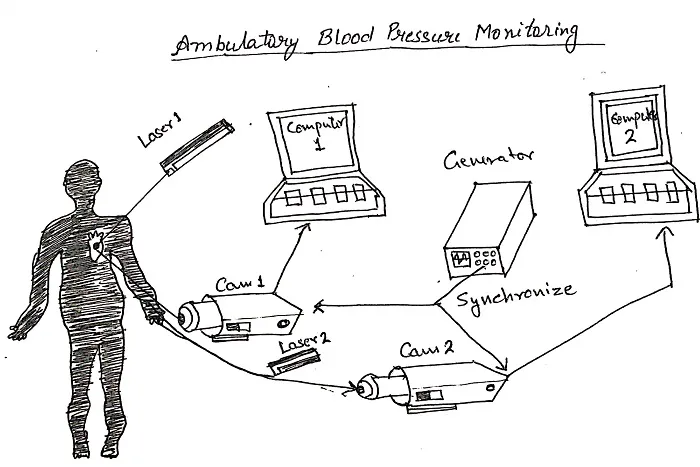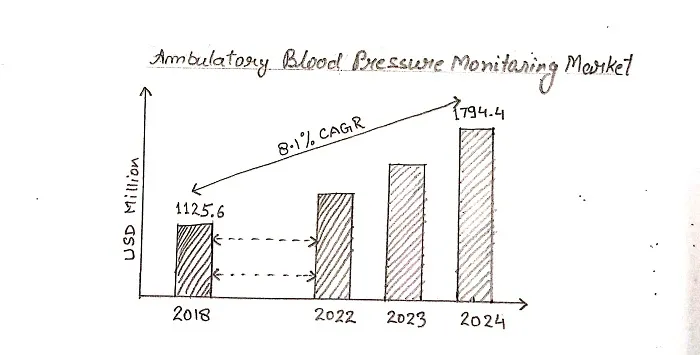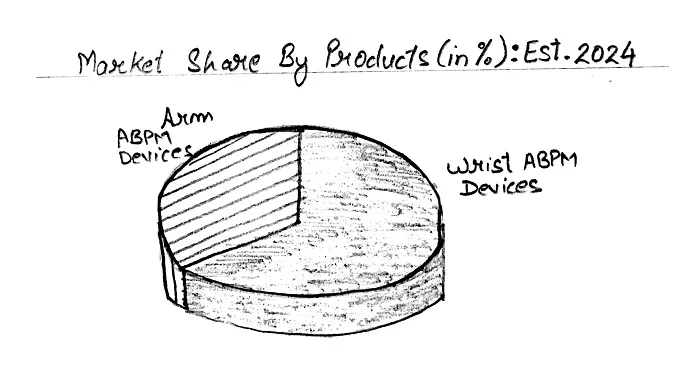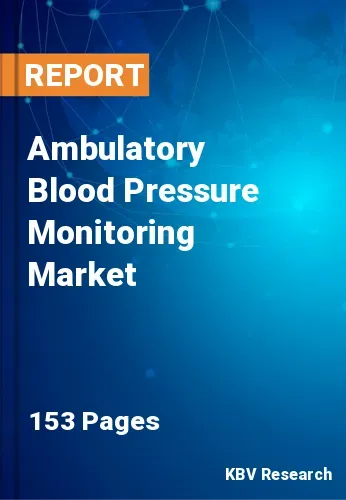The Ambulatory Blood Pressure Monitoring Market size is expected to reach $1.8 billion by 2024, rising at a market growth of 8.1% CAGR.
What is Ambulatory Blood Pressure Monitoring?
Ambulatory blood pressure monitoring involves monitoring of patients’ blood pressure over a 24-hour period as they carry out daily activities. These devices help in monitoring of blood pressure levels at different time intervals, usually ranging from 15 to 30 minutes. A compact and lightweight automated monitoring system is used in the process, to a cuff on the patient’s upper arm, which inflates when blood pressure is measured. The device provides information about the blood pressure changes, in relation to the daily activities and sleeping patterns. Ambulatory blood pressure monitors are mainly used in monitoring white-coat hypertension, nocturnal hypertension, masked hypertension, and episodic hypertension.

Additionally, these devices are also used in monitoring patients who are at risk of cardiovascular and cerebrovascular events due to hypertension. As compared to in-clinic and home blood pressure monitoring, ambulatory monitoring devices are better aligned to recognize abnormal variations in the blood pressure which would be otherwise unnoticed during routine check-ups. Higher level of accuracy, continuous monitoring and accurate blood pressure profiling are the advantages of ambulatory devices.
Growing cases of hypertension
Growing geriatric population and unhealthy habits such as alcoholism and smoking are major factors fueling the market growth. The population into unhealthy habits is highly prone to high blood pressure and is at risk of hypertension, and as a result, contributing to the demand for blood pressure monitors. As reported by the World Heart Federation, 970 million people worldwide suffered from elevated blood pressure in 2015. Out of the total number, around 330 million people suffered from hypertension just in developed countries, and the other 640 million were from emerging economies. Preventive measures can make a significant difference in the treatment of hypertension. The blood pressure can be easily monitored by using wearable and ambulatory blood pressure monitoring devices. Asia Pacific would be a region with major market opportunities and it is due to favorable government policies in emerging economies such as India and China.
High cost of ambulatory blood pressure monitoring
Ambulatory blood pressure monitoring devices are generally expensive as compared to other medical devices. These devices generally cost from $1,500 to $2,000 per device, including software for limited period. Moreover, reimbursement offered by the insurance companies is not worldwide. Additionally, there are limited indication covered by the Centers for Medicare and Medicaid Services (CMS), which requires three specific items: demonstration of BP levels below 140/90 mm Hg outside of the office on at least two occasions, demonstration of elevated BP above 140/90 mm Hg in the office on at least three occasions, and absence of target organ damage.

Globally, the Ambulatory Blood Pressure Monitoring Market is anticipated to attain a value of $1.8 billion by 2024, experiencing a single digit growth rate of 8.1% CAGR during the forecast period. Geographically, North American region was the leading region in 2017, with highest market share, followed by Europe. Asia Pacific on the other hand, would be the fastest-growing market during the forecast period. Increase in patient population, rise in prevalence of different types of diseases such as diabetes and cardiovascular diseases, and high adoption of non-invasive methods for measuring blood pressure are the factors that drive the market in the Asia Pacific region. The region would offer tremendous market potential as there is an increased focus by key players and improving healthcare infrastructure therein.
The North America market would dominate the Global Wrist ABPM Devices Market by Region by 2024, growing at a CAGR of 7% during the forecast period. The Europe market is expected to witness a CAGR of 7.3% during (2018 - 2024). Additionally, The Asia Pacific market is expected to witness a CAGR of 8.9% during (2018 - 2024).
Based on Product, the global Ambulatory blood pressure monitoring devices market size is segmented into Wrist ABPM Devices and Arm ABPM Devices. Based on End User, the market is segmented into Hospitals, Ambulatory Surgical Centers (ASCs) and Other End users. Based on Regions, the market is segmented into North America, Europe, Asia Pacific, and Latin America, Middle East & Africa.

The Hospitals market dominated the Ambulatory Blood Pressure Monitoring Market by End User in 2017. The Ambulatory Surgical Centers (ASCs) market is expected to witness a CAGR of 8.8% during (2018 - 2024).
Key Players
The Global Ambulatory blood pressure monitoring devices market analysis report covers the analysis of key stake holders of the market. Key companies profiled in the report include SunTech Medical, Inc., GE Healthcare, Welch Allyn, BPL Medical Technologies, Medtronic Inc., Spacelabs Healthcare, Inc. (OSI SYSTEMS, INC.), A&D Company, Ltd., Vaso corporations (Vaso medical), Schiller AG, and Omron Healthcare Company, Ltd.
Market Segmentation:
By Product
By End User
By Geography
Companies Profiled


Our team of dedicated experts can provide you with attractive expansion opportunities for your business.

